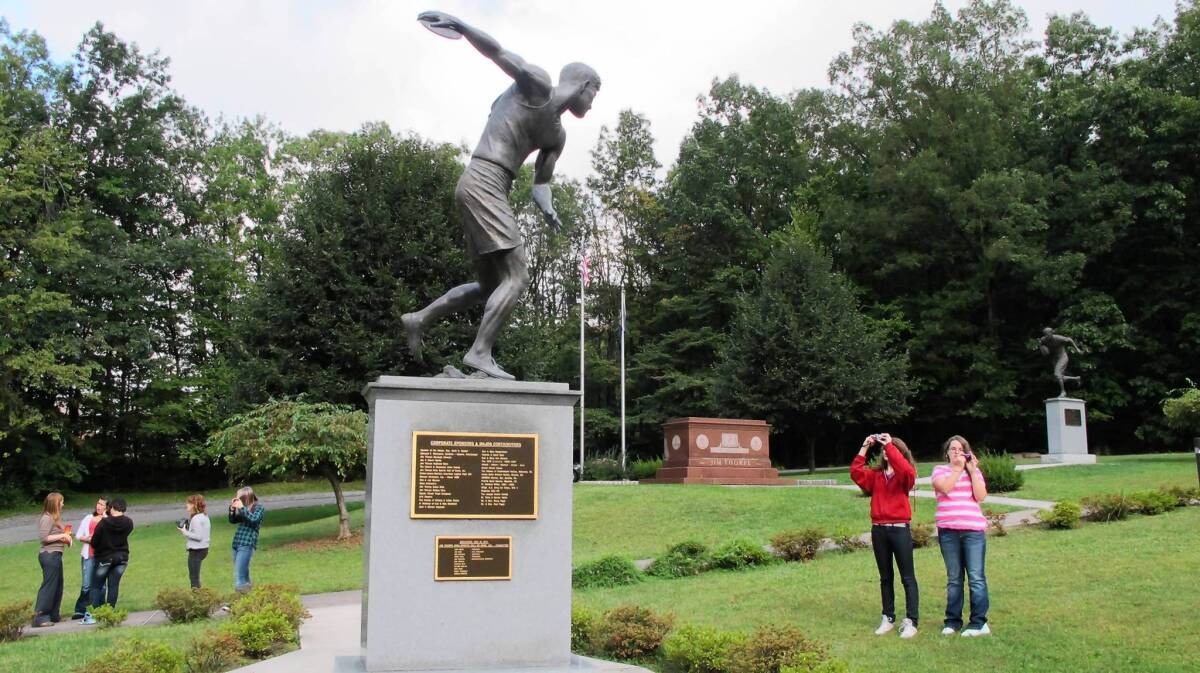Crafting fake eyes is a family business, rifts included
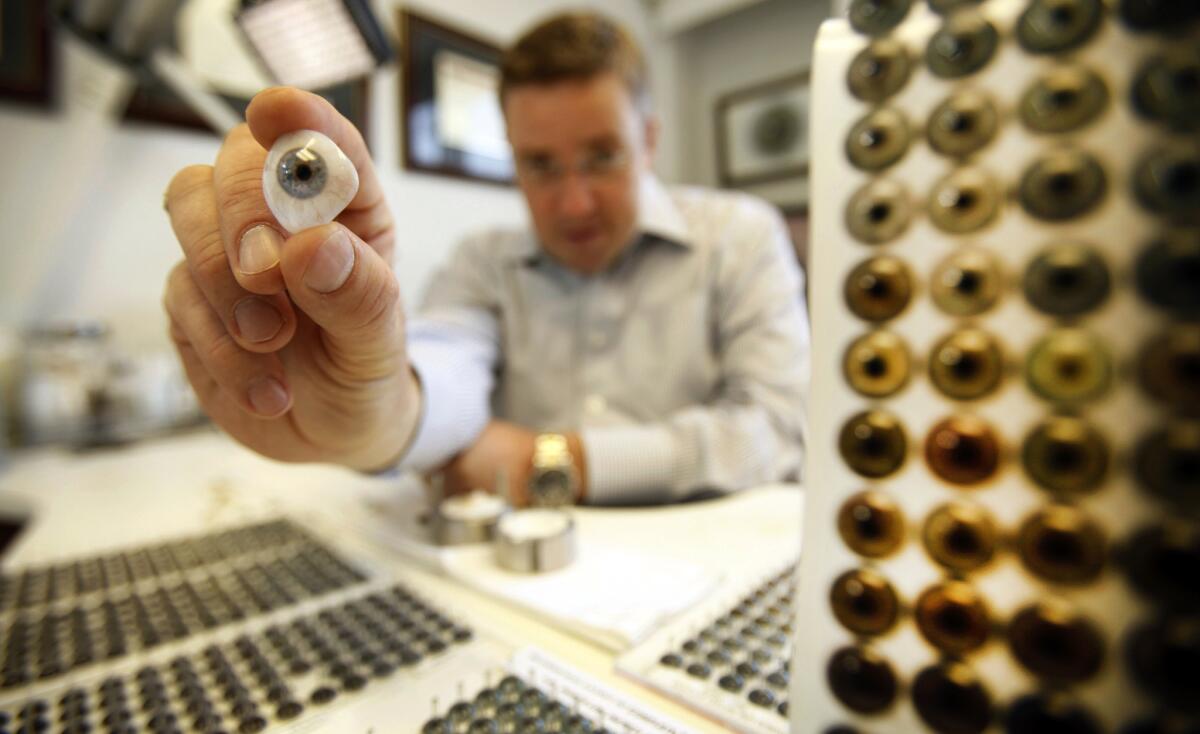
The small world of ocularistry is dominated by families who pass down secrets of fake eyes. Feuds also are a tradition.

L
ittle-known fact about the little-known world of ocularists: During World War II, supplies of the German glass used for making prosthetic eyes fell, so the U.S. Army organized a team to figure out a way to make the eyes using plastic.
Borrowing from techniques used in dentistry, the Army team cast molds of patients' injured eye sockets and used the impressions to make acrylic prosthetics.
Frederick Lewis was on the Army team at Walter Reed Hospital. After the war, he came to Los Angeles, ending up with offices in Beverly Hills, Tarzana and Santa Barbara.
During a career that spanned nearly six decades, Lewis fashioned tens of thousands of lifelike orbs — painting irises and pupils and veins on acrylic shells and popping them into patients' eye sockets.
Most ocularists are eye makers. I'm doing orbital restoration. It's more than that. I'm interested in giving people a second life.— Carole Lewis, ocularist
Lewis made prosthetics for members of Los Angeles society; for combat victims and cancer sufferers; for working types who had lost eyes doing tough manual labor.
His daughter, Carole, joined him in the mid-1980s, running the family's offices. After Lewis died, Carole's son, John Stolpe, also signed on, training with his mother and learning the trade.
The Lewises aren't unusual — ocularists tend to keep things in the family. Ask an ocularist for a list of a few families in the business, and he'll rattle off names with scarcely a thought: The Gougelmanns in New York. The Jarhrlings in Boston. The Kelleys in Philadelphia and Baltimore. The LeGrands in Philadelphia and Virginia. The Lewises in Los Angeles.
Parents take their children to work. Sometimes, when the children grow up, they marry someone from another ocularist family.
And sometimes, as in the best of families, they fight.

Carole Lewis works in Beverly Hills, her name posted next to her father's on her office door. She wears a summery sea-green dress, pins her blond hair in a bun and serves coffee in flowery teacups with saucers. Many of her patients travel a long way to get a "piece," as she calls the prosthetics, several of which are visible in a Tupperware-like container on her desk.
Lewis, who has been working as an ocularist for the better part of 30 years, prides herself on going to great lengths to get the best-looking results. In addition to making the eye, she says, she works with plastic surgeons to rejuvenate the tissues of the eye socket. She injects fillers.
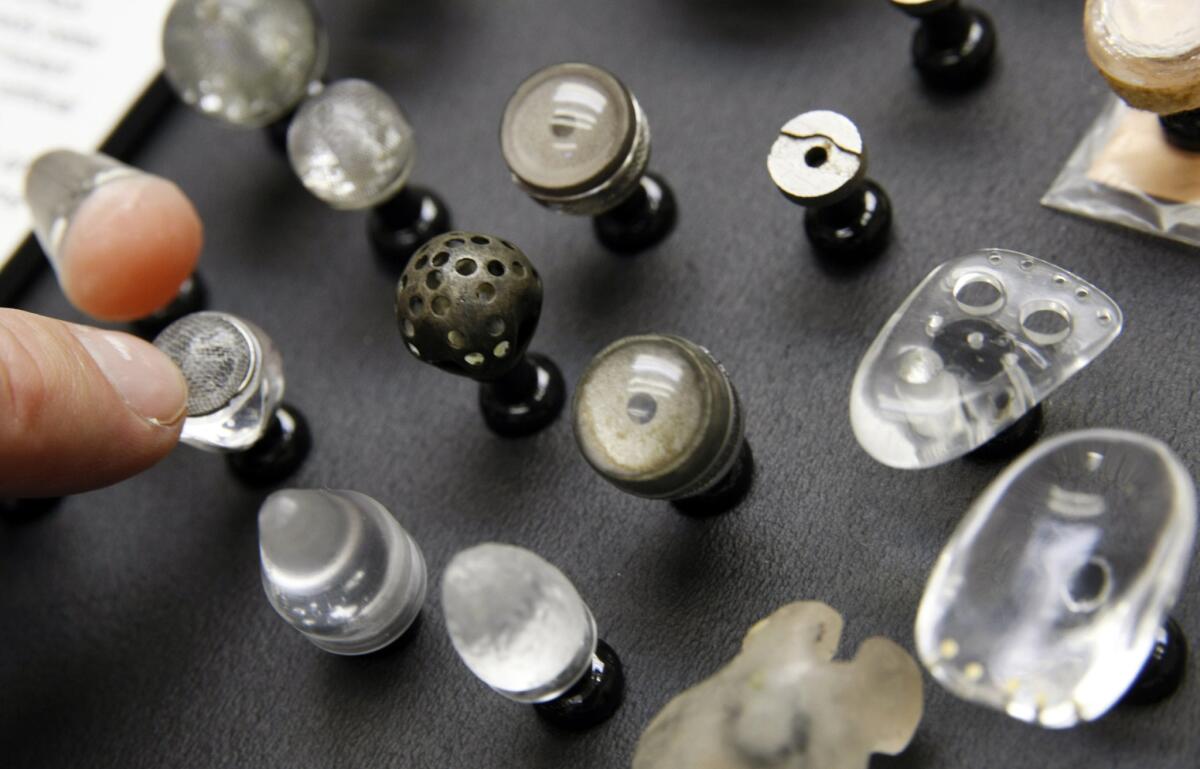
A collection of orbital eye implants used from the early 1940s to the 1990s. More photos
"Most ocularists are eye makers. I'm doing orbital restoration. It's more than that. I'm interested in giving people a second life," she says. (Foreign correspondent Chris Kraul, who was wounded in a bombing while reporting for the Los Angeles Times in Baghdad a decade ago, is among her clients.)
When a visitor walks into her consulting room, an assistant wields a jumbo digital camera, snaps a quick picture of the guest's eye and blows it up on an oversized computer monitor.
There's a lot of blue here, Lewis says, pointing out features on the iris: a green collarette — the thickest portion — with bits of brown scattered around in it. Thin, concentric whitish rings suggest heavy computer use, and swollen tissues near the tear ducts, recent travel.
"What color do you list on your driver's license?" Lewis asks. "I'll bet it says brown. But this eye isn't brown."

People have been making fake eyes since at least the 5th century BC. Egyptians, for instance, made them out of painted clay attached to cloth that lay on top of the socket. But ocularists didn't start fitting them inside eye sockets until much later, according to the American Society of Ocularists.
In the 15th century, inventors in Venice began making fragile eyes out of glass. French and German craftsmen perfected glass eye techniques in the 18th and 19th centuries, devising secret methods for creating the most realistic-looking irises and lenses.
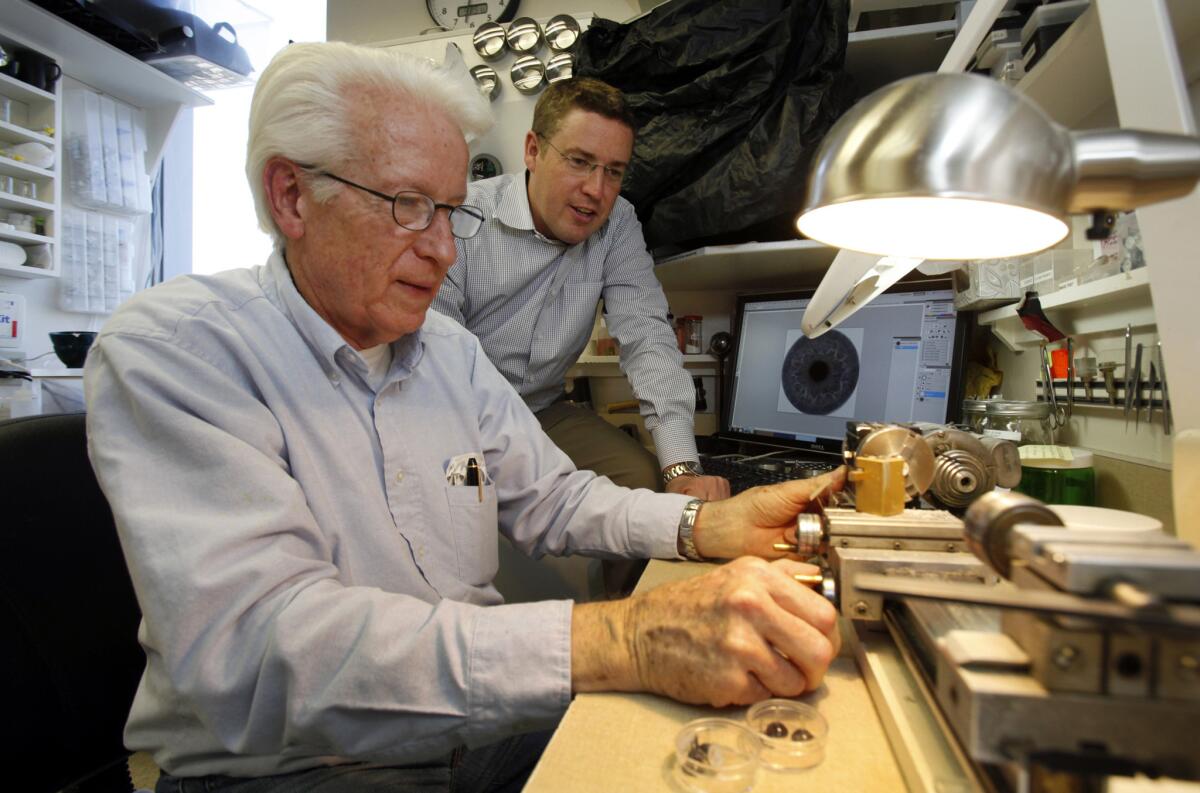
Stolpe watches as his father, John C. Stolpe, a retired research engineer, works on creating molds in the development of digital technology at Advanced Artificial Eyes in Tarzana. More photos
Universities don't offer course work in ocularistry, with its odd blend of art and science. The only real way to learn the trade is to apprentice yourself to another ocularist, if you can find one willing to train you. Most opt to keep their secrets within their families.
"I equate it to being a blacksmith in the old days," ocularist David Gougelmann says. "Children followed in the footsteps of the father."
Gougelmann's family has been making eyes since the 1850s. Three generations of Gougelmanns followed a single patient for 95 years. As a kid, David Gougelmann and his brother worked summers stocking cases — arranging prosthetic eyes in order of color in row upon row of shallow drawers — and sweeping their father's laboratory floor.

Lewis says her father never stopped trying to invent better ways to make eyes and rebuild faces. One interest was developing techniques for making irises digitally, without having to paint them.
At first, he didn't want his daughter to join the business because he thought she could do better — and because he didn't think second-generation children worked as hard as business founders. But Carole signed on. She and her father eventually patented a digital iris technology.
Stolpe, her son, works in the Tarzana and Santa Barbara offices. He makes replacement pieces for some of his grandfather's old patients — including a man who was in the offices the day President Kennedy was assassinated, and who still breaks out in tears every time he comes in, remembering that moment.
"There's a degree of trust from the beginning," Stolpe, 34, says of working in the old family office. "It's priceless."
Stolpe loves to talk about technology and his legacy from his grandfather. In his office, he's focusing on launching a business called Irises Unlimited, selling prefabricated and custom digital irises, available as a sort of kit, that ocularists elsewhere might order and place in custom-molded prosthetics.
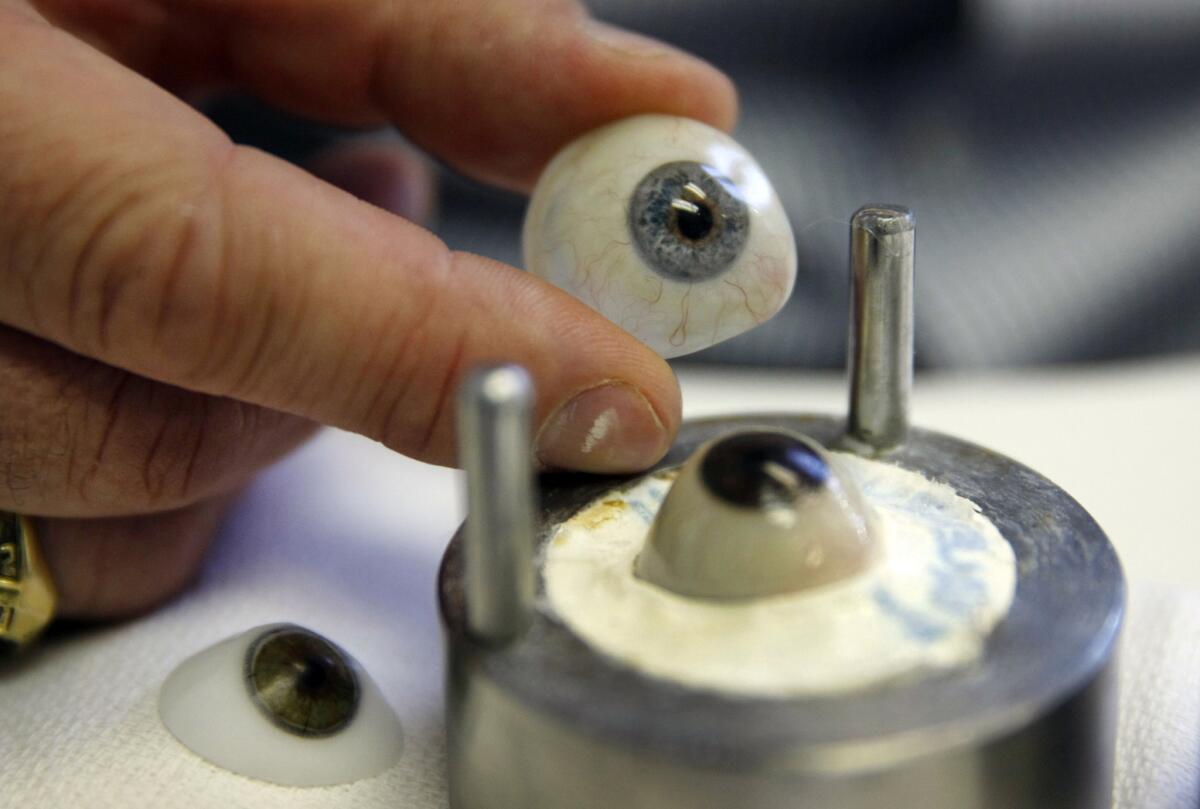
Stolpe holds a finished prosthetic eye next to a eye in the process of being molded. More photos
Most people have brown eyes, he figures, so it wouldn't take too much customization to make a product that would work for most people.
"If we can do these, we have almost everyone," he says, pointing at a few rows of disembodied brown plastic irises arrayed on a tray he keeps on his desk. "We're going for excellence, not perfection."
His digital eyes are designed for affordability and widespread access. An eye you'd buy in Beverly Hills could cost in the five figures, he says.

That might be a reference to his mother. He doesn't work with her any longer. The Lewis family business is no longer, in fact, a family business.
Shortly after Stolpe got his board certification to work as an ocularist, in 2010, the two parted ways.
Federal and state court records show that they fought for years to determine whether Stolpe could use the patented digital technology, among other things.
Today, like any competitor, he is not allowed to use the digital technology that Frederick and Carole Lewis patented. He and his father, who is divorced from his mother, have had to develop new techniques — their own family secrets — for his practice and for Irises Unlimited.
Fights within families are part of the ocularistry tradition too.
"Most families in the field of ocularistry have some kind of conflict," Gougelmann says. The son of a father who worked until he was 78 — "I don't know many ocularists who've ever retired" — he chalks it up to a tension that exists in family businesses of all kinds.
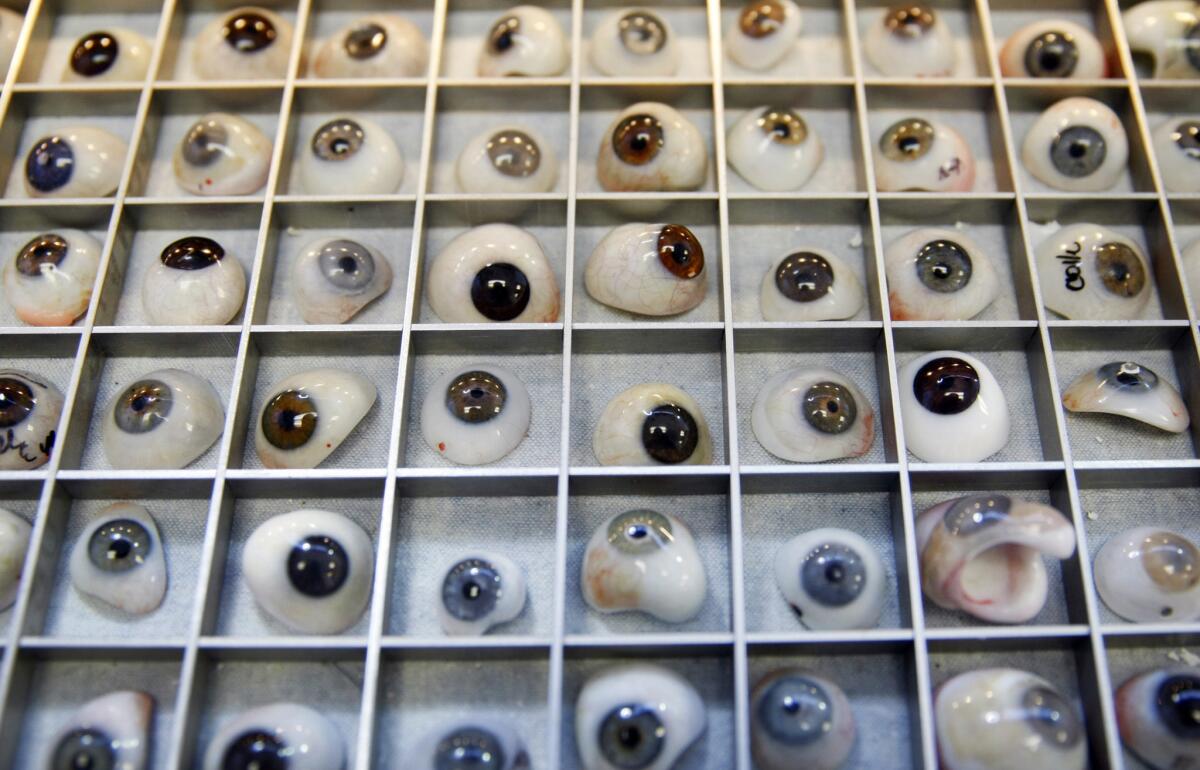
A collection of old artificial eyes in Stolpe's office in Tarzana. He's working on techniques to make eyes designed for affordability and widespread access.More photos
"There's this difficulty letting go," Gougelmann says. "You brought somebody into the business. At what point do you treat him as a peer? At what point do you relinquish the reins?"

Today, Lewis is focused on her high-end business. Her website, which prominently features a clip from her appearance on the television show "Dr. 90210," is translated into nine languages. On this day, a young man from Israel sits in her waiting room. He's been in town for several days to let Lewis adjust the fit of his new eye.
"There's no one as good as her," the patient says.
The vibe at Stolpe's office in Tarzana isn't quite like that in Beverly Hills. Coffee isn't offered in china cups. There are no fresh flowers. At times it smells like a nail salon because of solvents used during the acrylic manufacturing process.
But Stolpe too has happy customers walking in and out of the office.
And when a visitor goes into Stolpe's consulting room, the ocularist picks up a jumbo digital camera, snaps a quick picture of her eye, and blows it up on an oversized computer monitor.
"What color do you list on your driver's license?" he asks, as he looks at the screen.
"Because — and you'll probably be surprised to hear this — your eyes aren't really brown."
Follow Eryn Brown (@LATerynbrown) on Twitter
Follow @latgreatreads on Twitter
More great reads
Gay sports leagues gain ground as a social outlet
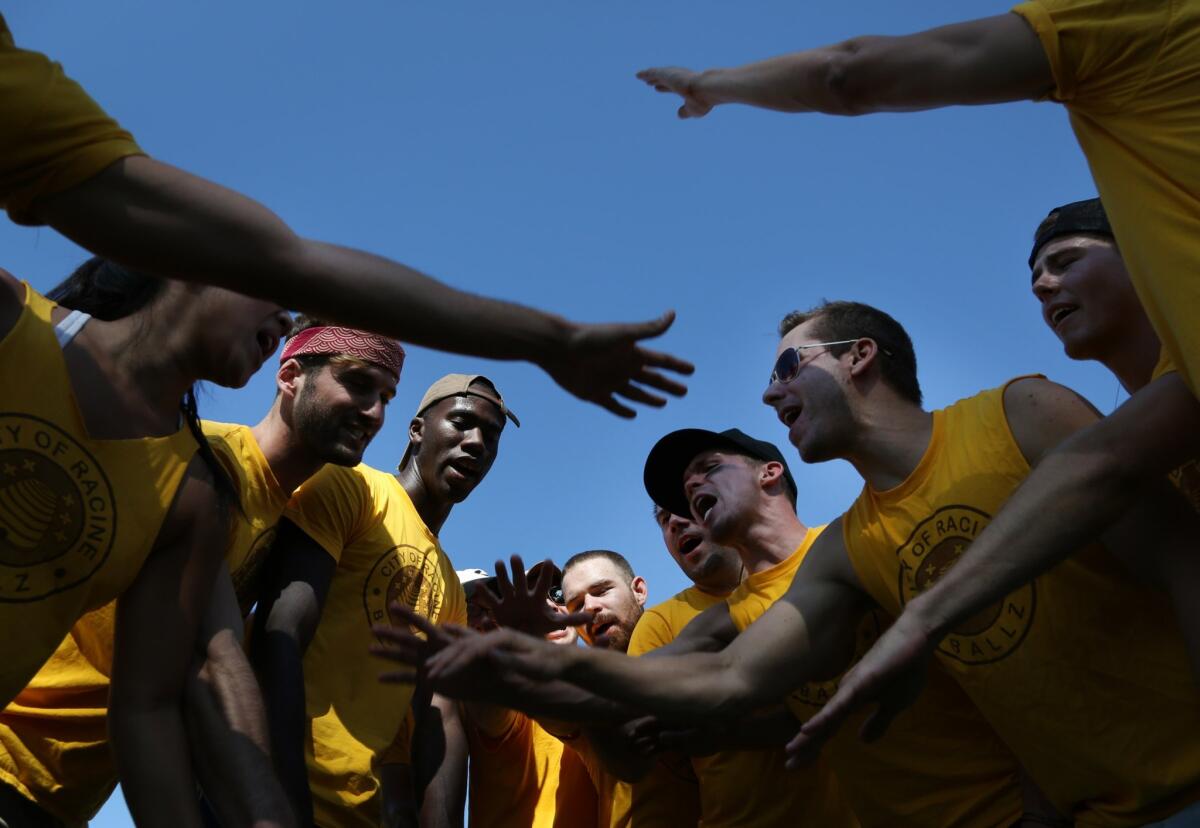
You meet people to date, people to be friends with, people who can give you job opportunities."
Sign up for Essential California
The most important California stories and recommendations in your inbox every morning.
You may occasionally receive promotional content from the Los Angeles Times.
